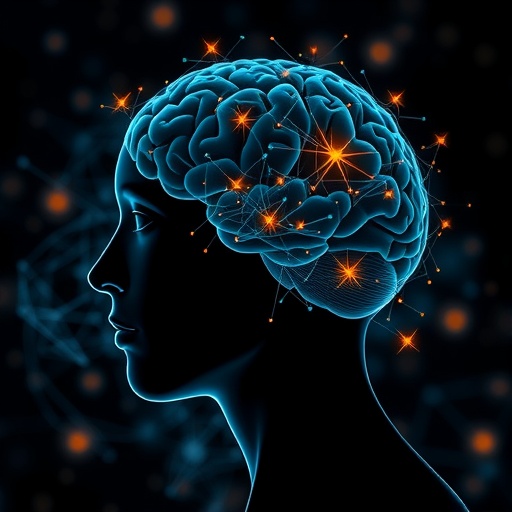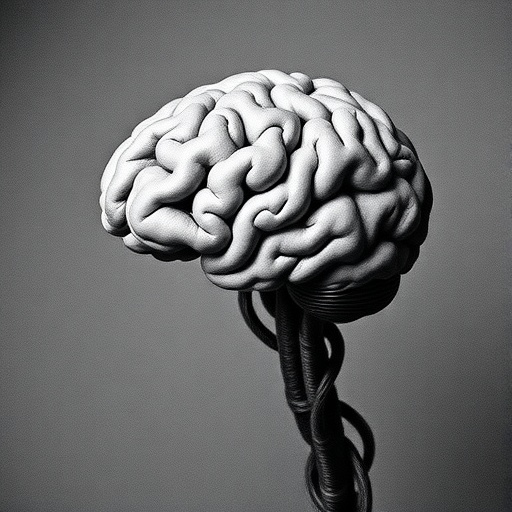Recent research sheds light on the intricate relationship between biological rhythms and cognitive abilities, specifically highlighting how age and sex impact diurnal memory oscillations, circadian rhythmicity, and the expression of the gene Per1. Conducted by a team led by Bellfy and colleagues, this study promises to reshape our understanding of the biological mechanisms governing memory and behavior across different demographics. Their findings published in “Biological Sex Differences” unravel the complex interplay between our internal clocks and cognitive functions.
As the world becomes increasingly aware of the impact of circadian rhythms on various biological processes, studies like this emerge as crucial to understanding the underpinnings of human cognition. Circadian rhythms are essentially the body’s internal clock, dictating not only sleep-wake cycles but also influencing memory, mood, and metabolic functions. This research highlights how variations in these rhythms can result in differential experiences in memory performance based on one’s age and sex.
The researchers focused on the Per1 gene, a critical component of the circadian clock that is known to play a role in regulating sleep patterns. Its expression fluctuates throughout the day, aligning with various physiological processes. By analyzing how Per1 expression varies with age and sex, the study offers profound insights into the biological basis of memory oscillations, revealing that certain demographic groups may experience higher or lower efficiencies in retaining and recalling information at different times of the day.
Memory is not merely a function of cognitive capacity; it is finely tuned to our biological rhythms. The findings from Bellfy et al. underscore the importance of considering these variables when evaluating cognitive abilities in both clinical and non-clinical populations. For instance, older adults may experience a stark decline in memory efficiency during specific periods of the day when Per1 levels are at their lowest, directly impacting their daily functioning and overall quality of life.
Moreover, the study reveals intriguing differences based on sex. It appears that biological sex plays a significant role in how memory processes are influenced by circadian rhythms. While males and females might share similar overall cognitive capacities, the timing of peak performance for memory-related tasks can differ dramatically. Understanding these nuances can help in developing targeted strategies for enhancing memory performance across diverse populations.
The implications of this research extend beyond academic interest; they have practical applications in educational settings, workplaces, and healthcare. For educators, recognizing that students’ memory performance may vary throughout the day can lead to the optimization of learning environments. For workplaces, it emphasizes the importance of scheduling tasks involving critical thinking and memory retention in alignment with employees’ peak cognitive performance times.
In the clinical realm, this research can inform treatment strategies for memory-related conditions, particularly in older adults. As the population ages, understanding how physiological changes affect cognitive health is pivotal. Tailoring cognitive therapies to align with circadian rhythms may enhance their effectiveness and improve outcomes for patients suffering from memory impairments.
Furthermore, this study paves the way for future research into the mechanisms that underlie circadian rhythms and memory. It opens up avenues for exploring interventions that can modulate Per1 expression or circadian alignment, potentially benefiting those with diminished memory function. Scientists may start looking into whether lifestyle changes, dietary modifications, or even pharmacological approaches can enhance Per1 expression and thereby boost memory performance in susceptible populations.
The study conducted by Bellfy et al. is emblematic of a growing body of literature that seeks to bridge the gap between neuroscience and chronobiology. It emphasizes the necessity for interdisciplinary approaches in tackling multifaceted issues like memory disorders and cognitive decline. By drawing upon insights from genetics, psychology, and biology, researchers can create a more comprehensive framework for understanding cognitive function as a dynamic interplay between our biological systems and external environments.
In conclusion, as we continue to unravel the complexities of memory and its relationship with circadian rhythms, it’s vital to appreciate how age and sex contribute to this intricate landscape. The findings of this research not only deepen our understanding of cognitive processes but also underscore the importance of personalized approaches in education and healthcare. By acknowledging the biological factors that influence memory, we can develop strategies that cater to individual needs, ultimately enhancing performance and well-being in various settings.
This new frontier in research encourages us to reconsider traditional paradigms of cognitive function. It challenges us to think about how much our biological rhythms shape not just our memories, but our day-to-day interactions, decisions, and overall life experience. Moving forward, it is essential to keep exploring these themes and to foster a society that values the synchronization of our internal clocks with our cognitive demands.
As we await further studies that build on this foundation, the research conducted by Bellfy and colleagues serves as a significant reminder of how interconnected our biological processes are—echoing the age-old adage that to understand the mind, one must also consider the body.
Subject of Research: The influence of age and sex on diurnal memory oscillations, circadian rhythmicity, and Per1 expression.
Article Title: Age and sex influence diurnal memory oscillations, circadian rhythmicity, and Per1 expression.
Article References:
Bellfy, L., Pifer, G.C., von Abo, M.J. et al. Age and sex influence diurnal memory oscillations, circadian rhythmicity, and Per1 expression.
Biol Sex Differ 16, 74 (2025). https://doi.org/10.1186/s13293-025-00756-x
Image Credits: AI Generated
DOI: 10.1186/s13293-025-00756-x
Keywords: circadian rhythms, memory, age differences, sex differences, Per1 gene, cognitive performance, diurnal oscillations.
Tags: age-related cognitive declinebiological rhythms and behaviorcircadian rhythm and memorydiurnal oscillations in memorygender effects on memory retentionimpact of aging on circadian rhythmsinfluence of circadian rhythms on healthinternal clocks and cognitive functionsmemory and biological processesPer1 gene expression and cognitionresearch on biological sex differencessex differences in memory performance





